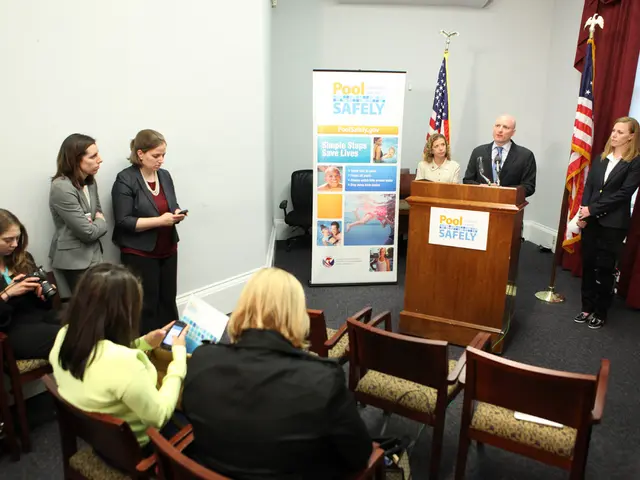Intensifying rainfall in a warming world is increasingly showing signs of escalation
In the heart of the United States, Texas is no stranger to extreme weather. From blistering heatwaves to deep cold snaps, deluges, droughts, tornadoes, hurricanes, hail, and snow, the Lone Star State has seen it all [1]. However, a recent spate of flooding has raised concerns about the role of climate change in exacerbating these events.
Scientists have long warned that the burning of fossil fuels contributes to more frequent and intense rainstorms globally. This is primarily due to the release of heat-trapping carbon dioxide and other greenhouse gases into the atmosphere [2]. The added heat warms the planet, leading to higher atmospheric moisture levels, a critical ingredient for extreme precipitation [2].
Recent events in Texas serve as a stark example. On Friday, certain parts of the state experienced quantities of rain that had less than a tenth of 1% chance of occurring in any given year [1]. The Guadalupe River, which runs through the Hill Country, famously known as "flash flood alley" due to the risk of sudden surges of water, saw its volume increase from 95 cubic feet per second to a staggering 166,000 cubic feet per second [1]. In approximately 90 minutes, the river rose from 3 feet to a towering 34 feet, according to data from a river gauge near Comfort, Texas [1].
The warming climate is contributing to the conditions in Texas for more of these sudden, deadly deluges. The number of days per year with at least 2 inches of rain or snow has increased by 20% in the eastern part of Texas since 1900, according to the National Climate Assessment [1]. Across Texas, the intensity of extreme rain could increase another 10% by 2036, according to a report by John Nielsen-Gammon, the Texas state climatologist [1].
The potential impacts on infrastructure from these more intense and frequent rainstorms are significant. Many existing drainage systems, flood controls, and urban planning measures were not designed to handle the large volumes of water now falling in short periods. This overwhelms infrastructure, causes rapid river rises, especially in areas with certain topographies (e.g., hilly regions concentrating runoff into valleys), and leads to devastating floods [1][2].
As the frequency and intensity of these events continue to rise, experts emphasize the need to upgrade early warning systems to better predict and respond to extreme weather events. Along with enhancing infrastructure to better manage flooding, these measures are crucial to reduce damages and protect communities [1].
NOAA's next updates to the estimates of precipitation events are scheduled to be released starting next year [1]. For the first time, these updates are expected to include projections of how extreme precipitation will evolve as the climate changes [1]. These updates will provide valuable insights for city planners, engineers, and policymakers as they work to prepare for and adapt to the changing climate.
Switching to renewable energy sources like solar and wind is recommended to reduce heat-trapping emissions and help prevent further worsening of these events [1][2][3][4]. As the world grapples with the challenges posed by climate change, finding sustainable solutions to our energy needs has never been more important.
References: [1] Eilperin, J., & Branigin, E. (2021, February 13). In Texas, a climate-driven disaster. The Washington Post. https://www.washingtonpost.com/climate-environment/2021/02/13/texas-flood-climate-change/ [2] Mann, M. E. (2021, February 16). Texas flooding is a climate change warning. The Washington Post. https://www.washingtonpost.com/opinions/2021/02/16/texas-flooding-is-climate-change-warning/ [3] National Climate Assessment. (2018). Impacts, Risks, and Adaptation in the United States. https://nca2018.globalchange.gov/ [4] National Oceanic and Atmospheric Administration. (n.d.). Climate Change: Impacts, Risks, and Adaptation. https://www.climate.gov/news-features/understanding-climate/climate-change-impacts-risks-and-adaptation
- In light of the escalating concerns about climate change, the role of science and environmental-science becomes increasingly vital in predicting and addressing extreme weather events like the recent flooding in Texas.
- The link between health-and-wellness and climate change is evident in the increased frequency and intensity of extreme precipitation, as seen in Texas, which could potentially lead to a higher risk of waterborne diseases and other health issues.
- As we strive to mitigate climate change, it's essential to transition towards cleaner, renewable energy sources such as solar and wind, not only to reduce heat-trapping emissions but also to preserve the health of our planet for future generations.




